Simms’ Women’s G3 Guide Waders: Review
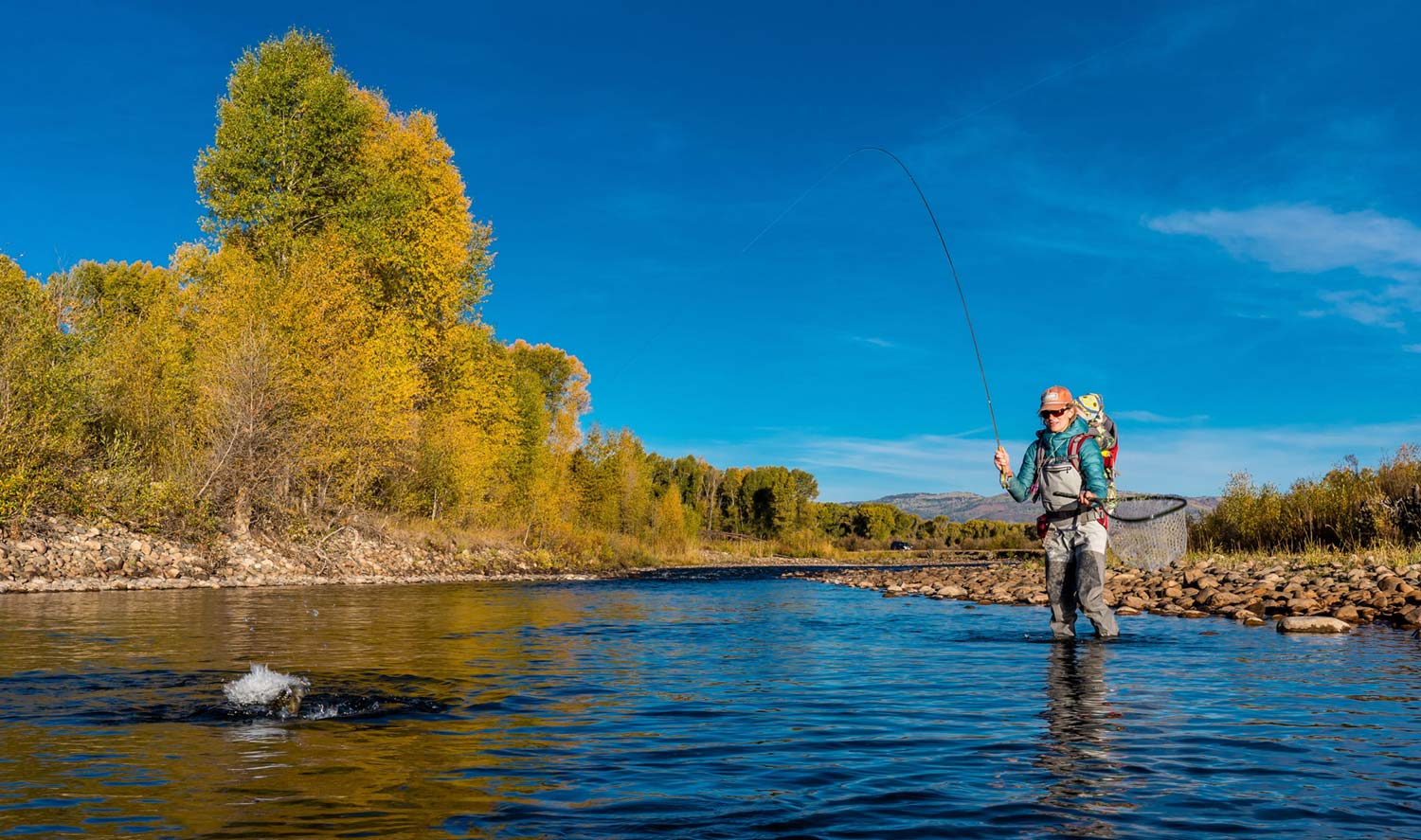
By: Alice Tesar
Simms’ Women’s G3 Guide Waders are a change worth making.
I’m a skeptic for change. I’ve worn my leaky waders for 2 years now because I like the fit and the weight of them. 2 years of settling for cold, wet legs after standing for hours with (dry) clients in the river. I’d patched and re-sealed my waders numerous times but it only held for so long. When I researched my options I’d find myself frustrated that there were limited choices for women’s GORE‐TEX® waders and I wasn’t going to spend $500 on a pair of men’s waders that didn’t fit me. That’s changed now.
No longer my fellow anglers will you sneak a peak of me changing into dry pants before hopping into the truck on a brisk fall day. The Simms Women’s G3 Guide Wader is 3- layer GORE‐TEX® Pro Shell in the upper body and 4-layer GORE‐TEX® Pro Shell from the butt through the legs. GORE‐TEX® Pro Shell offers durability, breathability, and a fit that allows me to focus on my clients and their catches instead of slopping around in wet wool socks and a garbage bag.
I’m 5’9” and wear a size 9 1/2 shoe, I wear medium weight socks with my waders and I fit a medium in this Simms Wader. I also run cold (even on clear, summer days I’m wearing my down jacket ’til noon), fitting a heavier layer or two under the waders is not a problem. With the scalloped top opening I don’t feel like all my extra top layers are strangling me.
I spend plenty of time on the river with my 1-year-old son in a backpack, the low profile wading belt and loops don’t catch on the backpack or my fishing pack, which I wear reversed. The suspender straps are 1.5” wide and are not overly padded but rather comfortable even with all the extra weight and additional pack straps.
Read More »Sunday Classic / Organizing Your Bonefish Fly Box Makes For A Better Day Of Fishing
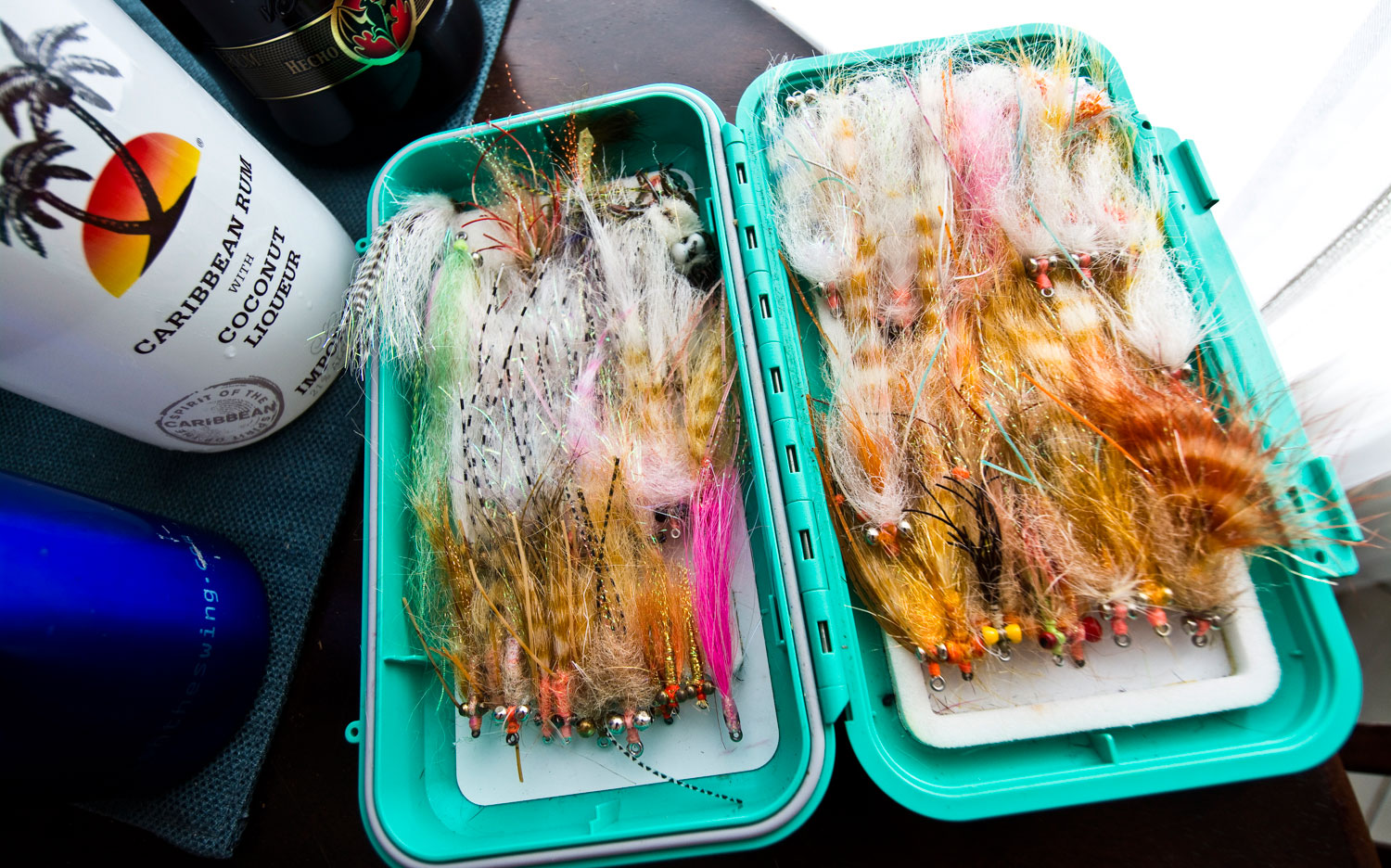
OPTION PARALYSIS EATS UP VALUABLE FISHING TIME.
I’ve found myself, more than once, staring into my fly box as if I’d wandered to the refrigerator in the middle of the night, with no idea why I was there. That’s fine, unless you’re surrounded by feeding bonefish and your guide is wailing in tongues. Even if your not under pressure to make a quick fly choice, having your flies organized in a logical fashion will help you choose the right fly for the conditions and that means catching more fish. Here are some tips on how I organize my bonefish box and how I use that organization to make better fly choices.
Keep It Simple
Bonefishing is not generally a match-the-hatch situation. Bonefish are highly opportunistic and presentation usually trumps pattern. I know guys that carry a thousand flies on the flats boat. They might fish three of them in a day. I keep it to one box. I probably cram a hundred flies into it but that one box has everything I need.
Making Smart Choices
When paring down your fly selection it’s important to understand
Saturday Shoutout / Alignment
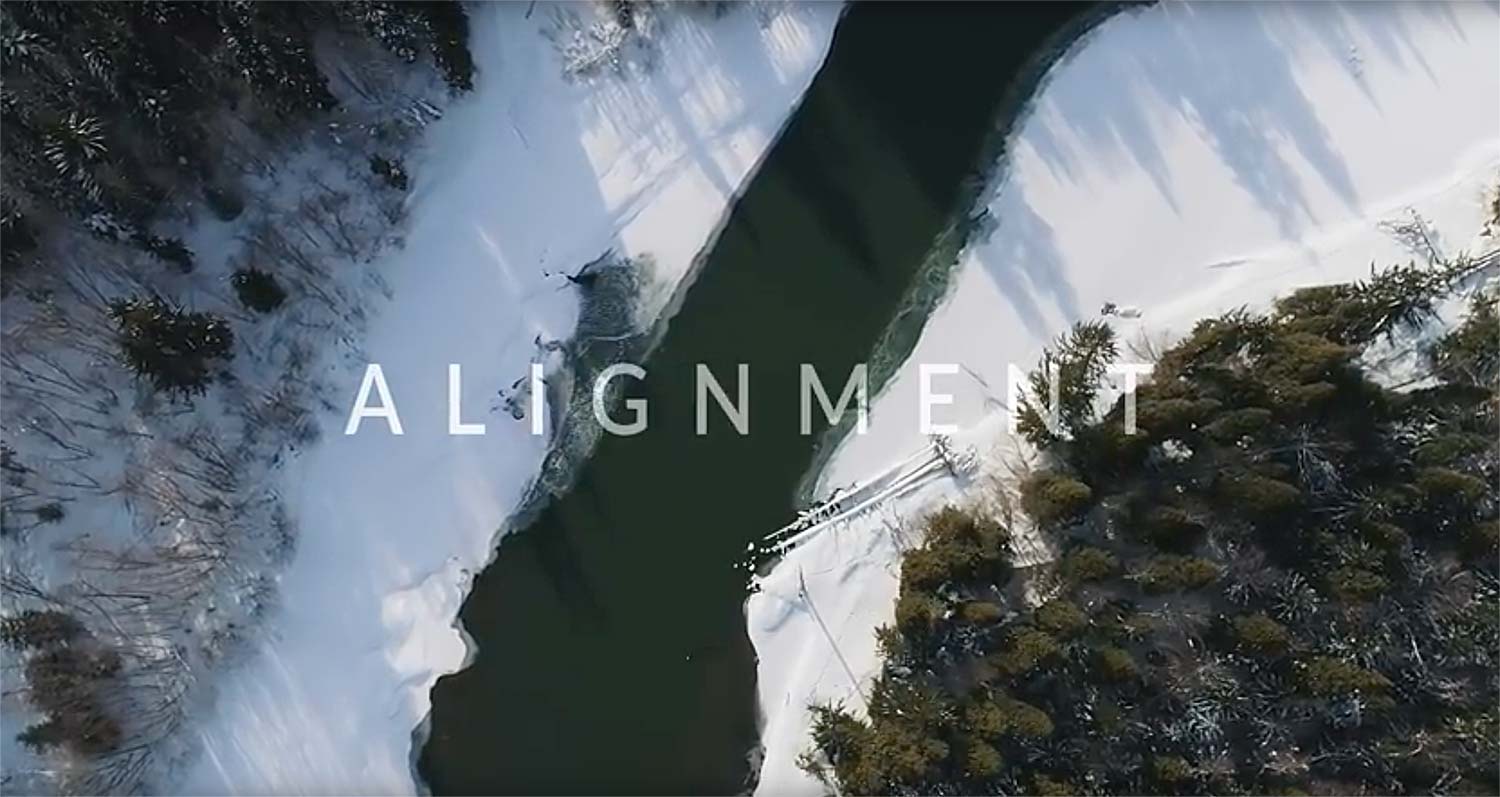
Join Eric Jackson on his search for alignment in British Columbia.
What does it take for you to be completely aligned? For Eric Jackson, and a few others, it’s steelhead and snowboarding. In this beautiful short film Eric and his crew, including my good buddy Curtis Ciszek, spend a winter in B.C. doing some amazing snowboarding and catching some big Skeena river chromers. Even if you don’t snowboard or steelhead, you’ll enjoy this great film.
FIND, “ALIGNMENT”
Read More »2 New Wading Boots From Patagonia
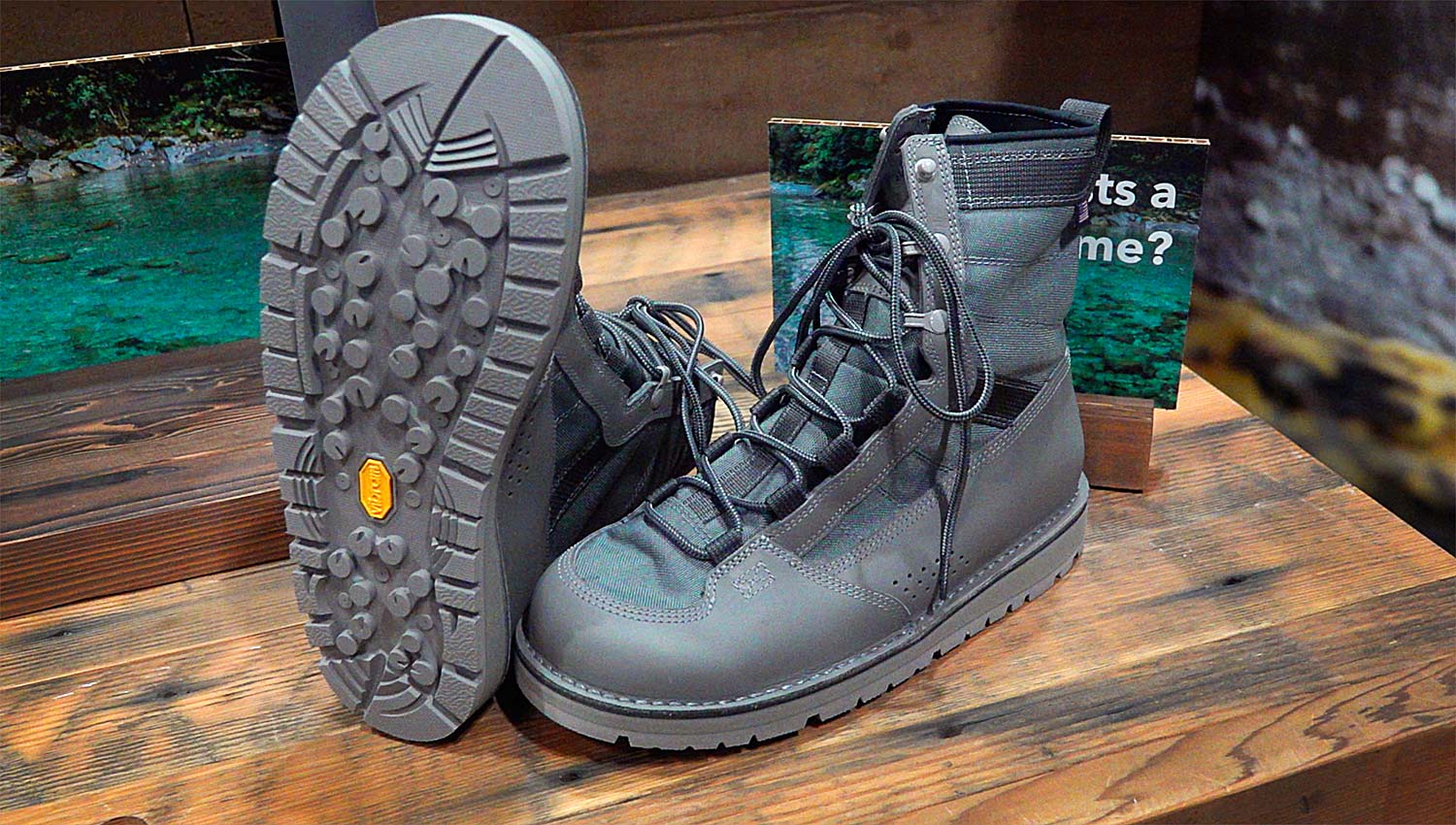
Patagonia teams up with Danner to make the toughest wading boots ever.
The new River Tractor and River Salt wading boots from Patagonia are not like any other wading boot on the market. Even from a distance you can spot the rugged look of classic Danner construction. Made in Portland Oregon, these boots’ with their leather uppers and stitched on soles, have a pedigree that goes back to the Marine Corp.
The idea behind these new boots is that they could be the last wading boots you need to buy. They are built, not only to last, but to be repaired. The construction allows for the boots to be resoled or repaired over time. Patagonia sees this as a plus for environmentally conscious anglers who don’t want their boots being landfilled every year or two. I’m sure there are plenty of anglers who will like that idea, and plenty who won’t care, but there is no downside to a boot that lasts.
There are two models to meet your fishing needs. The River Tractor is a classic cold water boot, designed to be worn over waders and is offered with the option of aluminum traction plates. The River Salt is a wet wading boot that’s light and built to hold up to trail hiking and sharp coral for the flats angler.
WATCH THE VIDEO TO LEARN ALL ABOUT THE NEW WADING BOOTS FROM PATAGONIA.
Read More »4 Ways To Up Your Streamer Game This Fall
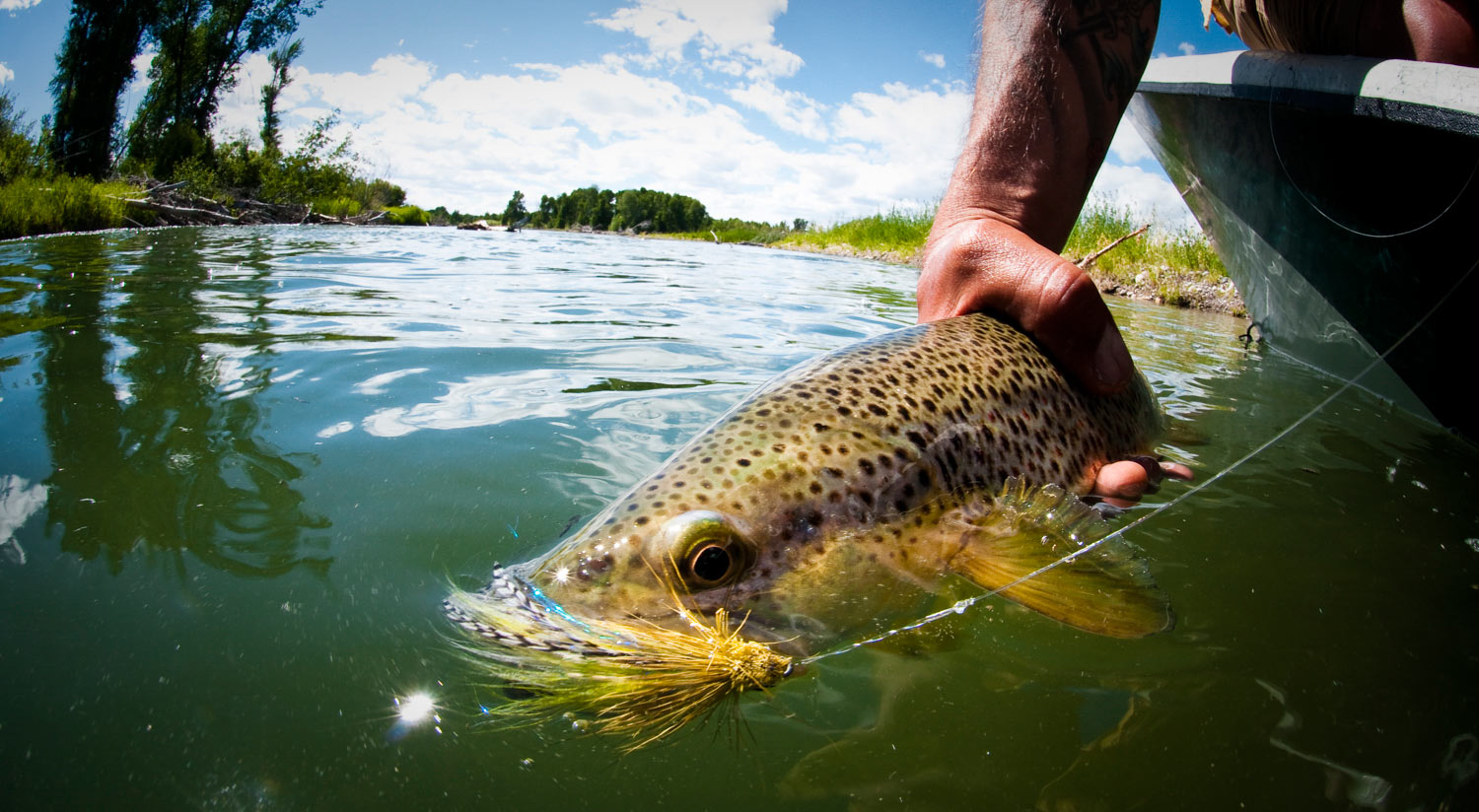
By Kyle Wilkinson
While fishing streamers can certainly be a productive way to put fish in the net year round,
there is no doubt that “streamer fishing” and “fall” go together like peanut butter and jelly (or if you’re like me, chicken fried steak and Coors). I know I’m not the only person who has recently spent a hot summer day dreaming of how good it will feel to need a few extra layers of clothing and a 6-weight in the months to come.
As many of you know, I talk to a lot of anglers, both in the shop and guiding. Whether it be a beginner/intermediate or more advanced angler, streamer fishing seems to get in a lot of people’s heads and in my opinion, causes a lot more confusion than is necessary. I tell these folks in simplest terms, it’s really not that complicated. You just have to do it. And more importantly, commit to it. This is where I think many people struggle — the ‘committing’ part. They don’t realize that a different mindset is required to become a proficient streamer angler, that you have to work your butt off, making countless casts, fully prepared to go hours without a strike.
I pride myself in my streamer fishing abilities but I’d be lying if I said there still weren’t times on the river where I find myself getting a little too worked up between the ears. There’s no way around it — some days are just a flat-out grind. On the flip side though, not every day is like that and if you fish streamers enough you’re going to find yourself on the river one day where the fish are in the mood to chase down your offering and give you explosive eat after explosive eat. If you’ve ever had one of those days then you know what I’m talking about. I’d also be willing to bet those days are some of your best on-water memories to date.
SO, TO GET WHERE I’M GOING WITH THIS, IF YOU’VE GOT IT IN YOUR HEAD THAT THIS FALL YOU’RE GOING TO IMPROVE YOUR STREAMER GAME, HERE ARE FOUR SUGGESTIONS ON HOW TO MAKE THAT HAPPEN.
Keep On Movin’– Everything listed below is built on this foundation. When streamer fishing, you HAVE to cover a lot of water. There’s no way around it. If you’re wade fishing, this means possibly logging many miles on your boots that day. You know that run you love to nymph and have found yourself spending hours in before? Be prepared
Read More »What is more important, presentation or fly choice?
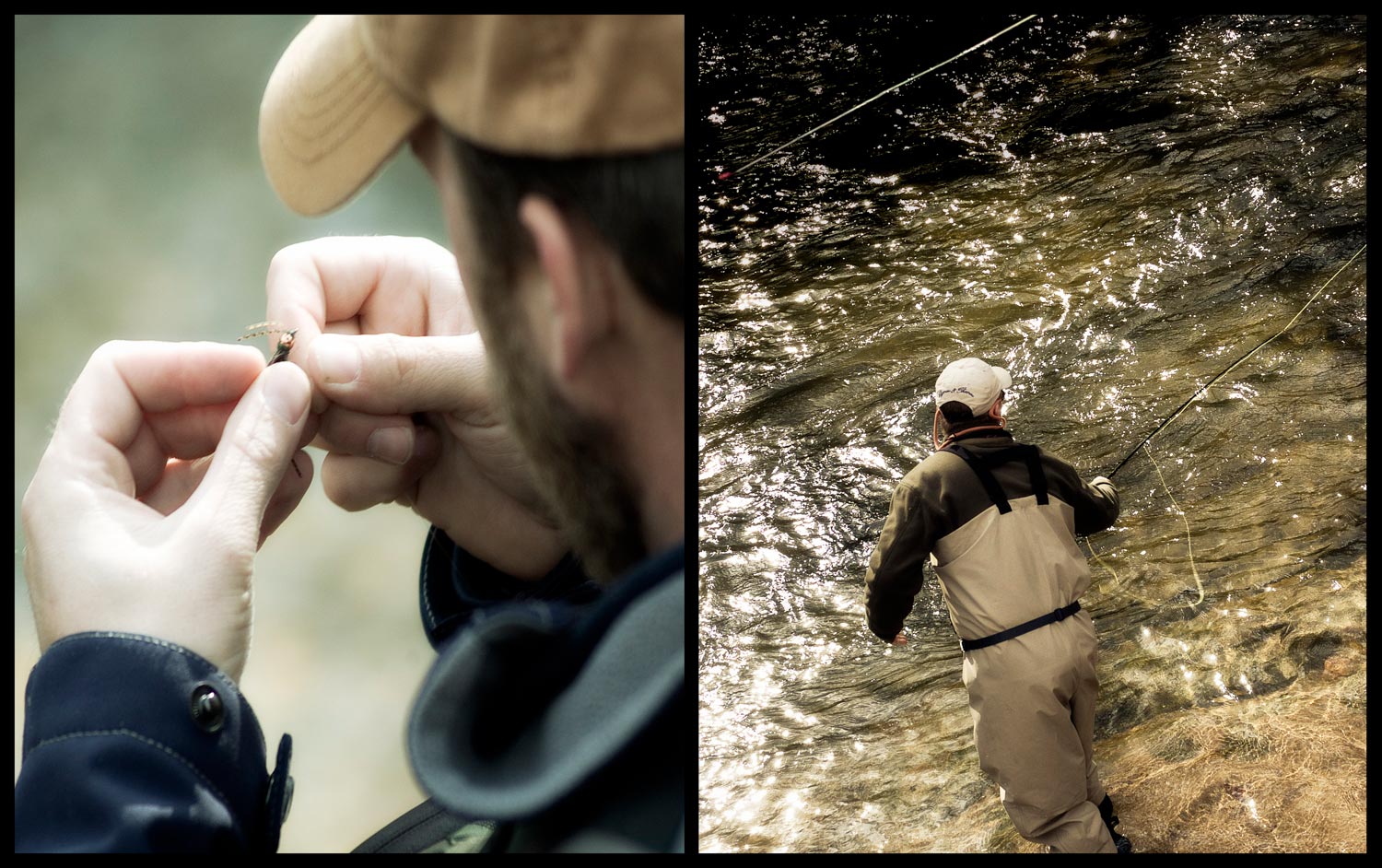
A few years ago, I was lucky enough to have the honor to participate in a podcast interview for askaboutflyfishing.com. It was an hour long conversation over the phone, with me spending most of that time talking about trout tactics on my home waters. Just as we were wrapping up the interview, the host Roger Maves, hit me with the mother of all fly fishing questions…..
What’s more important Kent, presentation or fly pattern choice?
I pondered for a few moments, before I gave a him a reply to the question that covered my butt. If I remember correctly, it was something along the lines of, “well, you have to get the fly to the fish no matter what to have a chance at catching fish, but there are many times, when I’ve seen fly pattern choice the true deciding factor in whether you find success on the water.”
Since that podcast, I’ve been asked that same question by clients more times than I can remember. It’s kind of a joke to me at this point, and that’s because I feel the question is really a loaded question.
Read More »Horsehair Worms
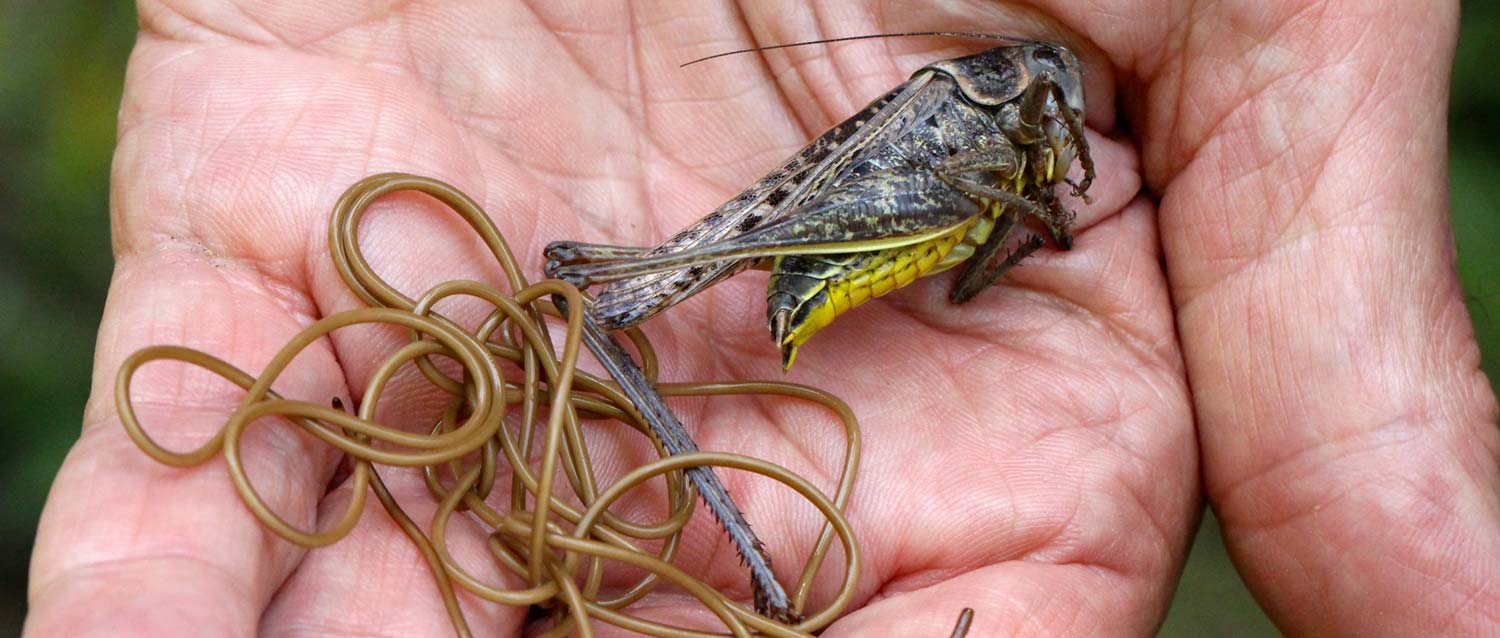
By Dan Frasier
You’re actually fishing worms
Tall waiving grass alive with thousands of hoppers and a stiff breeze. No setting can more quickly raise a flyfisherman’s heart rate. The promise of errant leaps by the insects causing aggressive and splashy rises by the fish can make the tying fingers of any sport trembly. So we look for conditions that are right. An abundance of hoppers or crickets is a good start, but often times we look for a little wind. Something to coax the crunchy fish snacks within striking distance of the fish.
But what if the wind wasn’t what was causing the hoppers to hit the water? Enter the horsehair worm; Spinochordodes tellinii to be more exact. (https://en.wikipedia.org/wiki/Spinochordodes_tellinii) The life cycle of this aquatic worm is fascinating. The larvae are found in the moist edges of bodies of water. There they are ingested by grasshoppers and crickets. The larvae then mature inside the insect; leaching nutrients out of the host and into its own skin. As it matures, the worm will molt many times, eventually growing to be up to 4 times the length of its host.
Now the worm has a problem. In order to mate it must find other horsehair worms and it must be in water. Here’s where things get weird. The worm, still inside the hopper, begins to release a protein called WnT, among others that are believed to mimic neurotransmitters in the brain. In other words, they start to take over the thoughts of the hoppers. Apparently one of the thoughts that the worm plants in the insect goes something like this. “Hey… you know what would be really fun right now? A cannonball into that stream!!”
Read More »Sunday Classic / Some Days It’s All About the Twitch
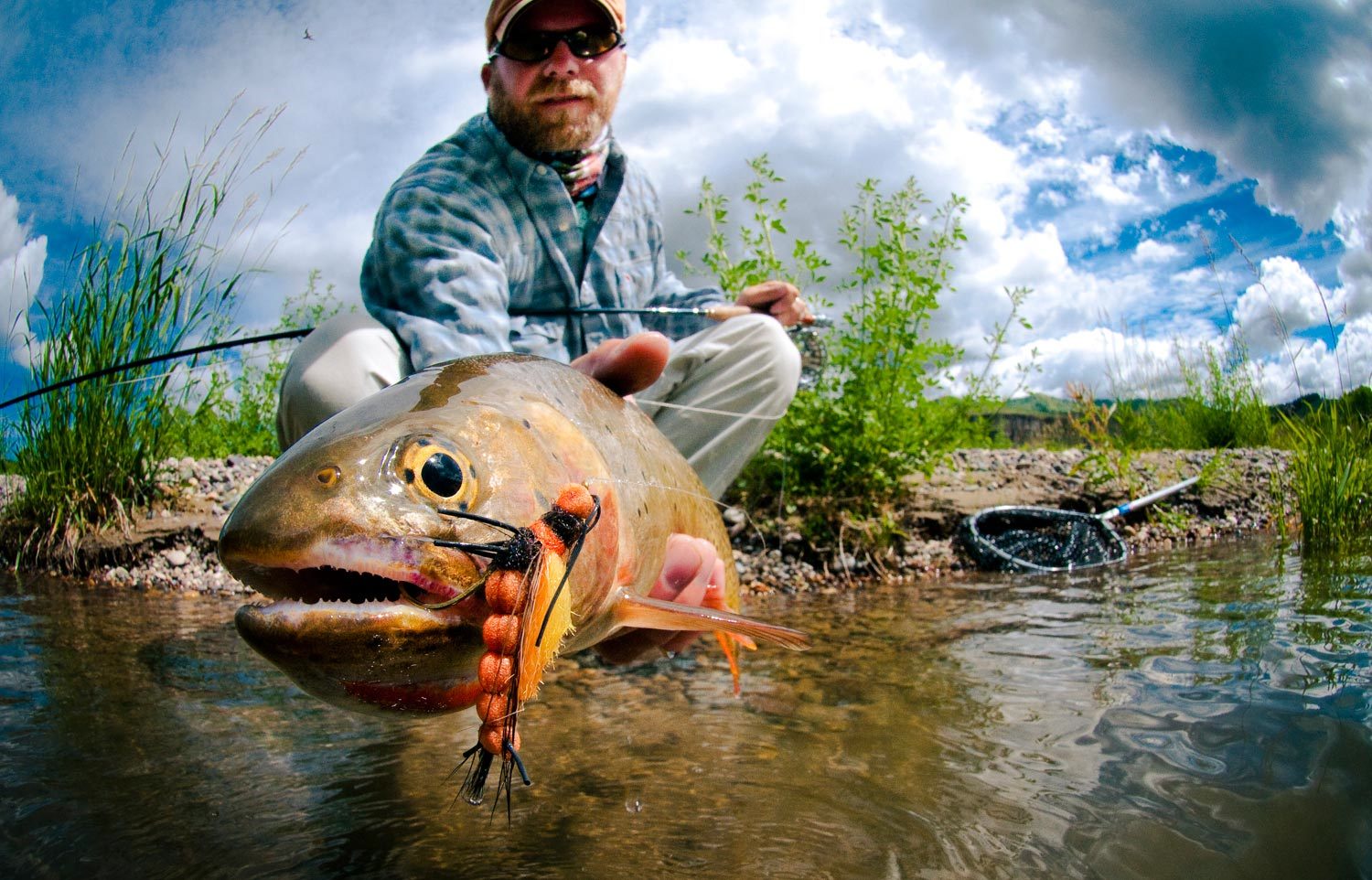
Some days trout need more than just a well placed fly in their field of vision and a drag-free drift to persuade them to eat. When you’re working water that you’re certain holds trout, and a standard drag-free drift isn’t getting the job done, try imparting subtle movement on your fly/flies to trigger bites. The best way to execute this is by using well timed rod tip twitches, during the drift, when your fly is moving through high percentage trout holding water. Done properly, it will give your fly that extra “alive and life-like appeal” and that often will give trout the green light that your fly is a natural and not an impostor.
Last week, I had the honor of fly fishing with Rob Parkins (WY & ID veteran guide) and Zack Dalton (Farbanks Sales Manager) on the South Fork of the Snake River during an epic salmonfly hatch.
Read More »Saturday Shoutout / Oregon Done
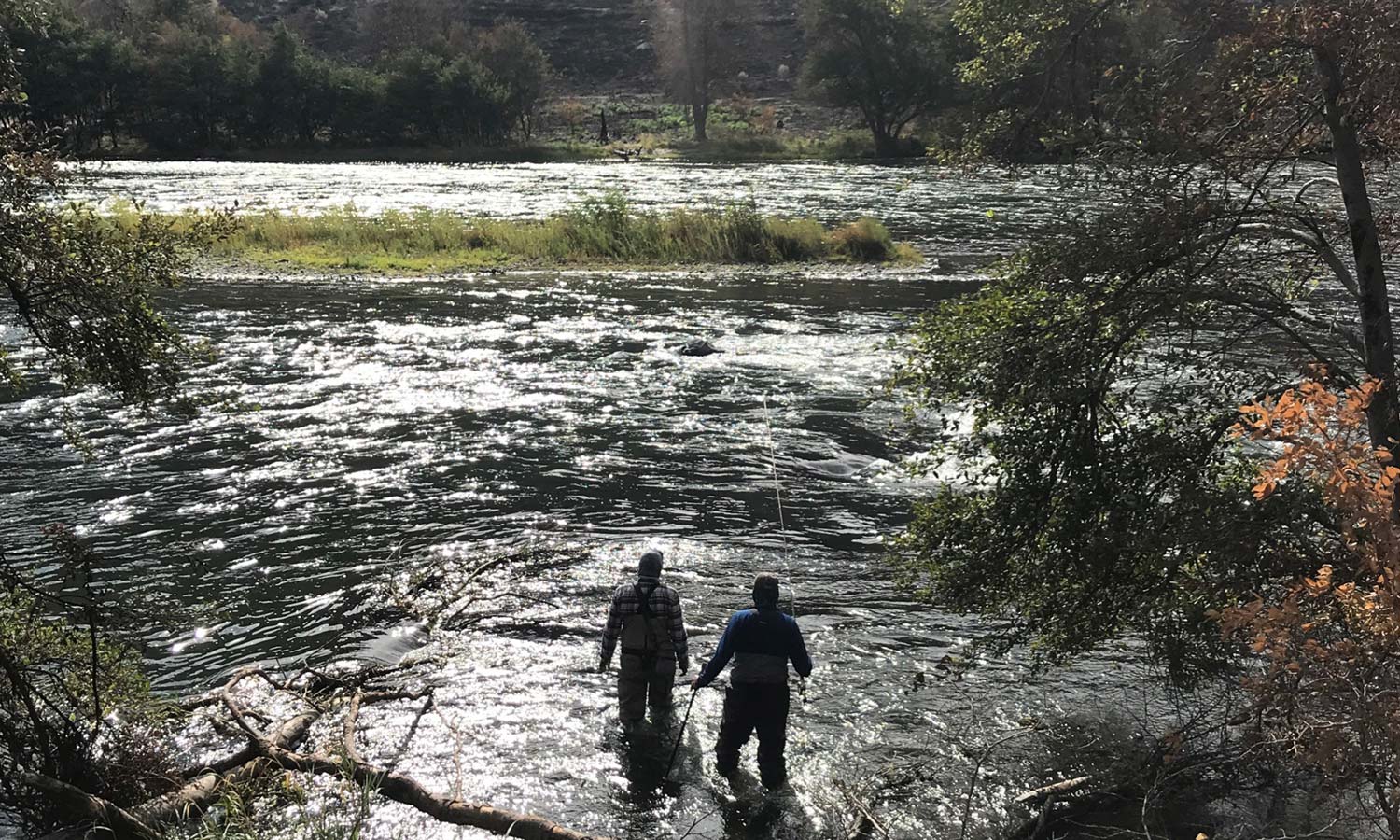
50 fish in 50 states, like George Thorogood with a fly rod.
I had the pleasure of fishing with Neil and Chris Thomas on the Deschutes. You couldn’t ask for a nicer or more enthusiastic couple of folks to share a run with. Neil and Chris have set a goal for themselves to catch a fish on the fly in each of the 50 states in the next 5 years. I knew they were doing it right when they took on the task of catching an Oregon steelhead on a swung fly as one of their first outings.
I didn’t know until later that Neil is chronicling the adventure online. He sent me a link to the post about the Deschutes trip and it’s really good. I love that it is such an authentic and organic endeavor. Just a great couple, having a blast catching fish on the fly. I look forward to following along, and I look forward to seeing them when they make it to Georgia!
Enjoy, Oregon Done
Read More »New Winston Fly Rods for 2018: Video
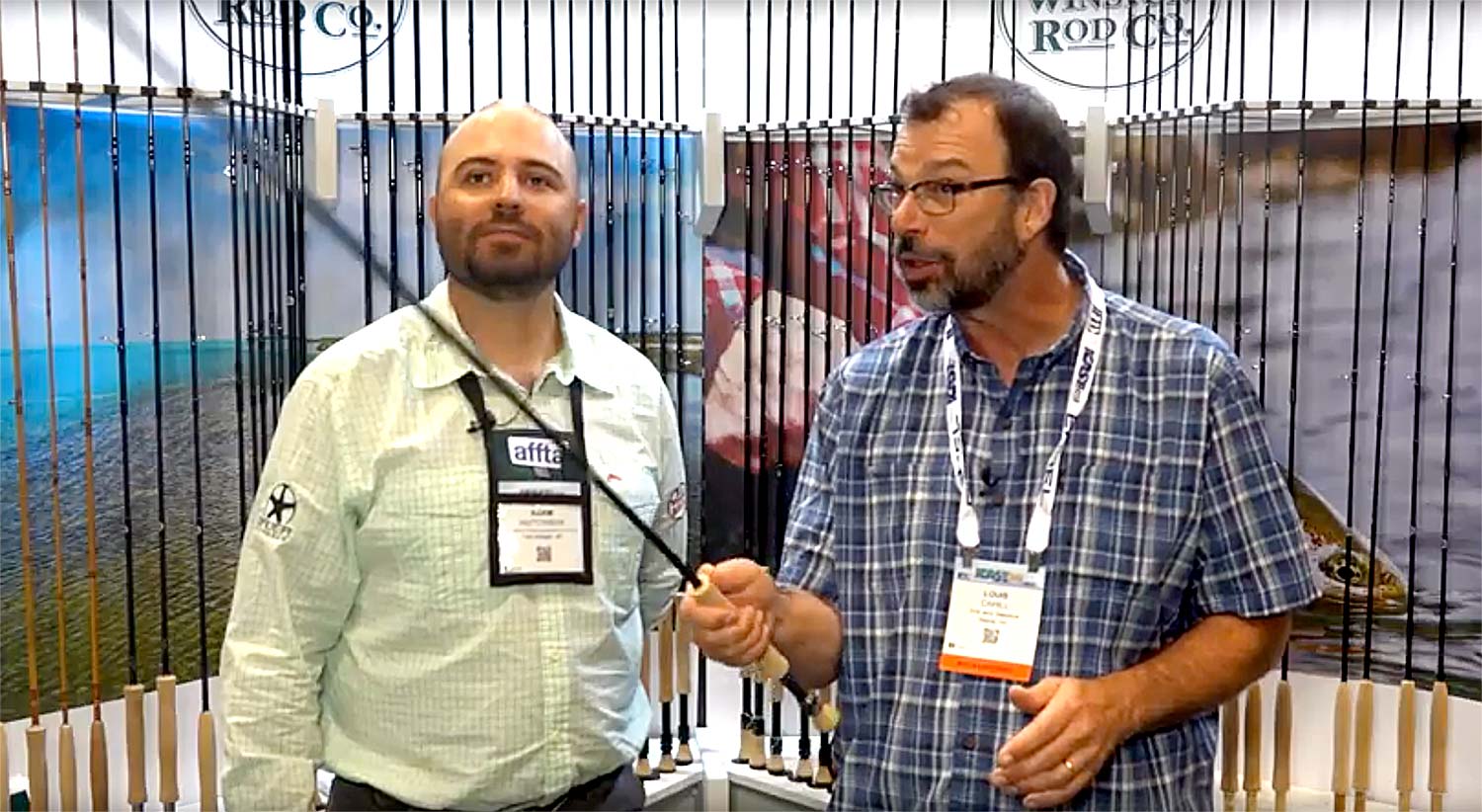
2018 Brings two new offerings from R.L. Winston, the Pure and the Salt Air.
These new rods hit both ends of the fly fishing spectrum. The Pure is a new offering for small stream, light line anglers. It replaces the B3LS and is available in 2 weight through 5 weight, with an impressive line up of three 3 weights and five 4 weights, ranging from 5’9” to 9’. The Pure is a medium action rod that’s light and well balanced.
The Salt Air is an impressive offering for flats anglers. It’s incredibly light and responsive with great feel. I had not cast the rod when we shot this video, but it didn’t take me long to get it out to the casting pond. I was very impressed. It’s smooth, accurate and has plenty of gas for the long cast. Maybe the most impressive thing is the amount of line it will pick up off the water and still make a clean cast. The Salt Air is simply dynamite.
Check out this video for the details on the new Winston Pure and Salt Air.
Read More »